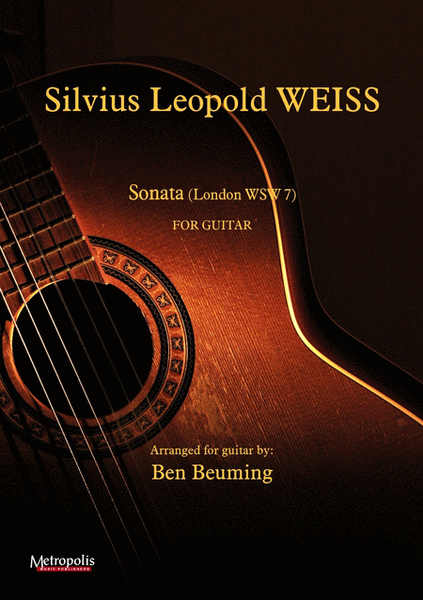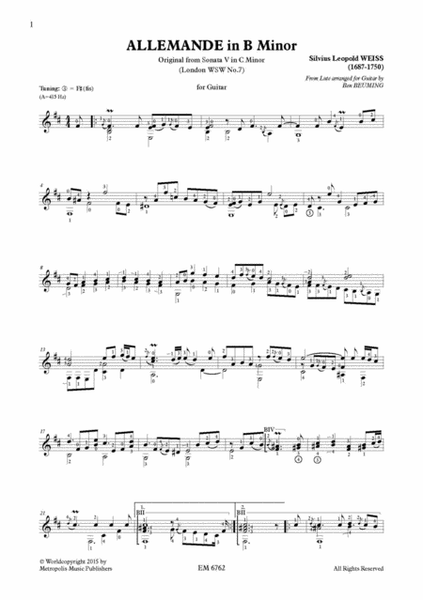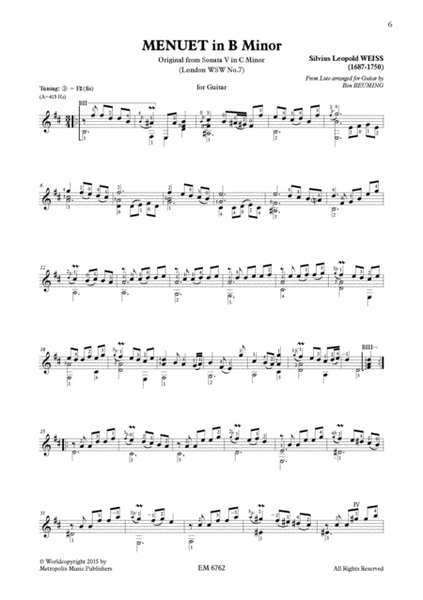Sonata V (London/Dresden nr.7) for Solo Guitar
-
Ships in 1 to 2 weeks
Details
Description
SKU: IS.G6762EM
Composed by Silvio Leopold Weiss. Arranged by Ben Beuming. Plucked - Guitar. Metropolis Music Publishers #G6762EM. Published by Metropolis Music Publishers (IS.G6762EM).ISBN 9790365067626.
This sonata (WeissSW No. 7, London) is one of a new series of eight sonatas by Silvius Leopold Weiss arranged for the first time for guitar and published by Metropolis Music. Sonata V is among the first sonatas composed by Weiss. The autographed manuscript is dated 1706. Weiss was only 20 years of age and at the beginning of his career. The Sonata has the classic French structure of a Suite consisting of six movements: an opening Allemande, followed by a Courante, a Gavotte, a Sarabande, a Menuet and ends with a Gigue. There are two more or less complete manuscript copies of this sonata; one in the British Library in London (Ms. Add. 30387), and one in the Sächsisches Landesbibliothek in Dresden (as Suite XXXI). The Dresden Manuscript is full of mistakes and is missing a Menuet. There are a few concordant copies of isolated movements in the Bibliothèque National in Paris (Allemande), and in the Harrach Manuscripts in Rohrau, Austria (Courante and Gigue). I have chosen the London Manuscript as the main source for this Edition because of its completeness and coherence. Some of the details, however, are borrowed from the Dresden version. Originally, the Sonata is written in C minor, a key appropriate for playing a Baroque lute tuned in D minor. However it is rather awkward with the guitar. For ease and effectiveness of playing, I have transposed the Sonata a minor second lower to B minor. To create more concordance with the baroque tuning of the lute, the G string is lowered by a semitone to F sharp. To achieve the original pitch a capodastro should be used on the first fret, if based on the present standard of A at 440 Hertz. However, during Weiss’s lifetime, it was more common in many parts of Germany to use a standard of A at 415 Hertz -‐ a semitone lower. So, to hear the pitch heard by Weiss and his contemporaries, no capo should be used.



 Share
Share